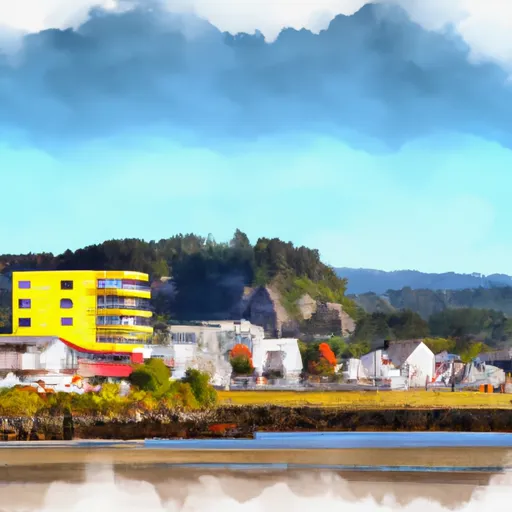°F
°F
mph
Windspeed
%
Humidity











Nehalem, located in Tillamook County, Oregon, is a picturesque small town nestled in the Nehalem Valley. The climate in Nehalem is characterized by mild, wet winters and cool, dry summers. The average annual precipitation is around 80 inches, making it a lush and green area with abundant vegetation.
The town is surrounded by natural beauty, with the Nehalem River flowing through it. The river provides a vital source of water for the region and supports various hydrology constituents, including salmon and steelhead trout. Fishing enthusiasts can enjoy casting their lines in the river, while nature lovers can explore the diverse flora and fauna along its banks.
Outdoor recreation opportunities abound in Nehalem and its surroundings. The Nehalem Bay State Park, located just a short distance away, offers activities like hiking, camping, picnicking, and beachcombing. Visitors can also enjoy kayaking or paddleboarding on the Nehalem Bay, while birdwatchers can spot a variety of avian species in the area.
In summary, Nehalem, Oregon, boasts a mild, wet climate, a thriving hydrology system with the Nehalem River, and an array of outdoor recreation opportunities, making it an appealing destination for nature enthusiasts and those seeking an escape into the Pacific Northwest's natural wonders.
Weather Forecast
Nehalem receives approximately 2647mm of rain per year, with humidity levels near 68% and air temperatures averaging around 11°C. Nehalem has a plant hardyness factor of 9, meaning plants and agriculture in this region tend to thrive here all year round.
Nearby Snowpack Depths
1
Inches
Regional Streamflow Levels
402,000
Cubic Feet Per Second
1,050
Cubic Feet Per Second
621
Cubic Feet Per Second
3,330
Cubic Feet Per Second
Nearby Camping
| Camping Area | Reservations | Toilets | Showers |
|---|---|---|---|
| Saddle Mountain State Park | |||
| Kilchis Park | |||
| Nehalem Falls - State Forestry |



